
Become a member
Join today and help protect nature, beauty and history – for everyone, for ever. Enjoy access to more than 500 places with National Trust membership.
A tranquil 17th-century house set within intimate gardens and woodland.
South Harting, Petersfield, West Sussex, GU31 5QR
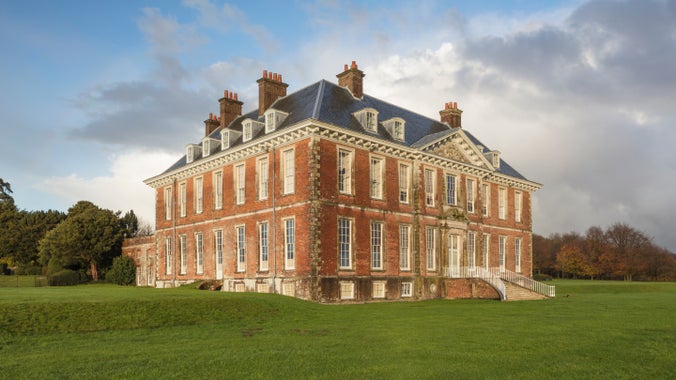
| Asset | Opening time |
|---|---|
| Garden | Closed |
| House | Closed |
| Refreshment Kiosk | Closed |
| Second-hand bookshop | Closed |
Free to enter gardens, refreshment kiosk & second-hand bookshop. When the house is open, normal admission applies. Booking is not required for Christmas at Uppark.
| Ticket type | With Gift Aid | Without Gift Aid |
|---|---|---|
| Adult (18+) | £10.00 | |
| Child (5-17) under 5s free | £5.00 | |
| Family (2 Adults and up to 3 children) | £25.00 | |
| 1 adult and up to 3 children | £15.00 |
Grab yourself a pre-loved book, a cup of coffee from our nearby kiosk and enjoy a comfortable seat in our wonderful East Pavilion.
Open from 09.30am until 4.15pm. This car park is chargeable for non-National Trust members but free for members. Signage on site displays charges.
Cycle racks are available in our main car park. Alternatively you are free to bring your bike into the gardens with you but we do ask that you dismount for the safety and enjoyment of other visitors.
Dogs are allowed everywhere on site on short leads except the tunnels and main house. Assistance dogs are permitted throughout the site.
Lots of places to run free around our free to enter garden and meadow.
Overlooking the stunning South Downs and with views as far as the Solent, enjoy light bites and a brew with a spectacular view!
We have a dedicated shaded picnic area adjacent to our Visitor Reception and near to the car park with a few picnic benches. Alternatively you are welcome to bring your own blankets and picnic throughout the garden and meadow.
Toilets are available at Visitor Reception or in the Tunnels (via the café seating area). Our accessible toilet is inside our Second-Hand bookshop. Baby changing is available in all our toilets except those by Visitor Reception.
Accessible toilet available within the Second-Hand Bookshop. Accessible parking available in the main car park. For more information on access, please view our access statement below.
Situated inside our second-hand bookshop, or if you are on a guided tour of the house, there is also an accessible toilet in the basement of the house.
We have 6 accessible spaces available in the car park and a drop off point by the house. Please speak to a member of the Visitor Reception team if you require extra support.
By the house. Please speak to a member of the Visitor Reception team for access.
We have a fully accessible hard path around our main amphitheatre garden leading round to the café.
A lift is available in the house as part of the tours.
Please contact the property via email to pre-book one of our wheelchairs.
All the important details about visiting Uppark, including opening times, booking tickets, car parking, facilities and new walking and cycling options.
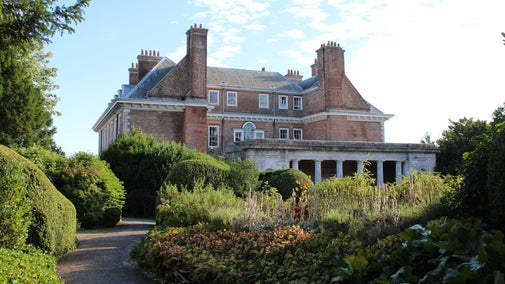
Find out what family-friendly activities you can enjoy at Uppark House and Garden, from nature trails to theatre events, picnicking to kite-flying.

Free to visit, these intimate and colourful gardens offer a scented garden, amphitheatre, architectural flourishes and panoramic views across the South Downs.

Visit the house at Uppark this Christmas and you'll see each room adorned with twinkling lights and sumptuous decorations.
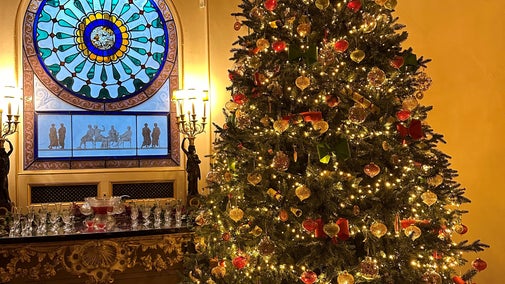
Entry is free to the varied 19th-century-designed gardens, with areas dedicated to colour, scent and quiet contemplation, plus the Meadow for nature spotting.
Take a guided tour of the mansion house, decorated with antique furniture, ornaments and paintings, and with servants' quarters and tunnels below stairs. No booking of the house is required to visit for Christmas at Uppark. During Christmas opening – 7–24 December there will be no guided tours and no need to book in advance, but you will need to buy a ticket or show your National Trust membership card at Visitor Reception.
Buy a range of refreshments and snacks from the Uppark kiosk– or bring your own picnic to enjoy as you take in the beautiful views. Our café is currently closed.
Visit the East Pavilion to delve into the shelves of our restocked bookshop and take your pick from a range of preloved titles. Pull up a seat and stay a while; a lovely place to relax and enjoy your refreshments from the Uppark kiosk.
Enjoy our Meadow Walk with views across the South Downs, or follow a longer walk that makes use of local rights of way routes.
Take a look inside this classic historical house, filled with exquisite furnishings from all over the world, and discover what life was like below stairs for serving staff.
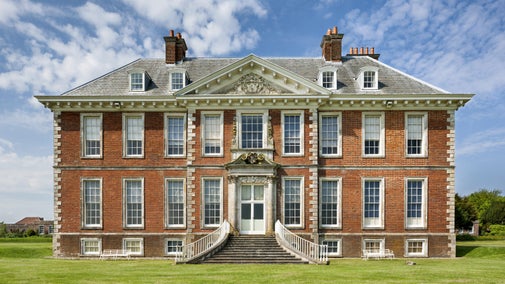
Free to visit, these intimate and colourful gardens offer a scented garden, amphitheatre, architectural flourishes and panoramic views across the South Downs.

The grounds at Uppark are free to visit. Come for the spectacular views over the South Downs to the coast, a range of walks and a chance to spot some wildlife.
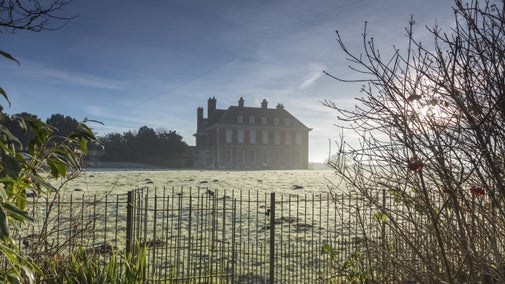
Find out what family-friendly activities you can enjoy at Uppark House and Garden, from nature trails to theatre events, picnicking to kite-flying.
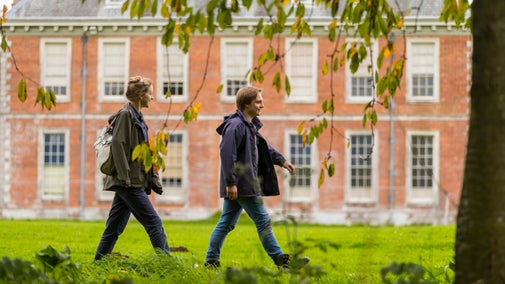
The catering kiosk offers hot and cold drinks, snacks and a selection of scones and bakes. Pick up something delicious and pick somewhere to enjoy the views of the panoramic South Downs.

Explore a traditional Christmas at Uppark. Feel the thrill of glitz and glamour upstairs in the house where we welcome you in with twinkling Christmas trees.
A 17th-century house set in varied and intimate gardens, with spectacular views over the South Downs to the Solent.
Free to enter, the gardens offer tranquil seating areas, meadow walks and picturesque picnic spots.
No booking is required to visit Christmas at Uppark, 7 - 24 December 2025. Christmas at Uppark is free for members.
Explore over 400 years of history, from the early estate to the last owners. Discover when grand decorations and furnishings were added, and substantial renovations took place.

Look back in time through the history of the gardens at Uppark, dating back to the early 18th century, which has shaped how they appear today.

Find out about the essential work undertaken to improve security, safety and facilities, including a major project to connect Uppark to the sewage main.
The Palladian-style 18th-century dolls’ house at Uppark is one of only a surviving few. Built on a grand scale, it features opulently decorated rooms and beautifully dressed dolls.

Explore the impressive collection at Uppark, much of it from the 18th century, including ornate furniture, paintings and ornaments.


Join today and help protect nature, beauty and history – for everyone, for ever. Enjoy access to more than 500 places with National Trust membership.
By sharing your email address you’re agreeing to receive marketing emails from the National Trust and confirm you’re 18 years old or over. Please see our for more information on how we look after your personal data.